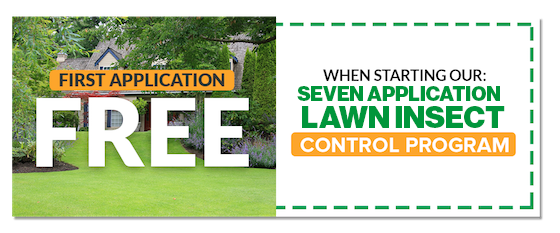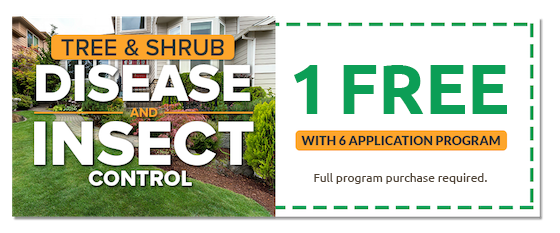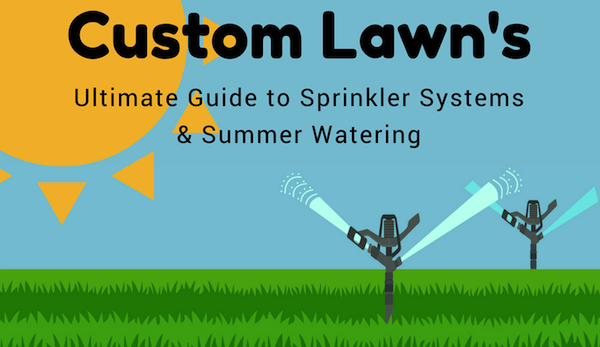
Symptoms of an Unloved Sprinkler
Let’s face it, it’s easy to forget about your sprinklers. All but invisible most of the day, your sprinklers work tirelessly to care for your lawn while you’re away by saving you both money and time. When they’re really good at their job, sprinklers are just about unnoticeable and tend to be forgotten.
Unfortunately, when something goes wrong with your sprinkler system, your lawn is in trouble. Custom Lawn explains how sub-par sprinklers are bad news for more than just your water, and what you can do to keep your sprinklers in tiptop shape. We also threw in some of our best advice for watering your Johnson County lawn and tips to save you water and money.
4 Ways Ignoring Your Sprinkler Can Hurt Your Lawn
1. Water Pressure
One of the sneakiest sprinkler issues isn’t actually caused by your sprinkler! Water pressure plays a huge role in how effective your irrigation system is; while low pressure means poor coverage and poor uniformity, high pressure leaves too much water on your lawn and can create a mist that carries past where you need it to go.
As if that weren’t enough cause to check your sprinklers, excessively high water pressure wears out your system, leading you to repair and replace expensive equipment far more often than you should need to.
2. Broken Sprinkler Heads
Next, whether high water pressure wore it down, or the trimmer clipped the edge of your sprinkler head, a broken sprinkler head spells trouble. If the sprinkler head is only partially damaged, it may still spray, but not well enough to water it’s entire designated area.
As for geysers (sprinklers that have broken so severely they spray directly into the air), most of the area is missing out but your utility bill just keeps rising.
3. Tilted Sprinkler Heads
Likewise, a tilted sprinkler head can cause havoc on your lawn. By covering some areas too closely, and some not at all, a sprinkler head only needs to be a few degrees shy of perpendicular from the ground to leave a stressed lawn in its wake.
4. Clogged Sprinkler Heads
One last symptom to check for is a sprinkler that moves well, but only spits water when it should be spraying. Luckily, a clogged sprinkler head is most often an easy fix, and can usually be cleaned out with a paperclip and a gentle hand.
Tips to Care for Your Sprinklers
Just as with your car, after a while, your system needs a good tune up. Small changes can make a big difference and if each sprayer needs just a little attention, your lawn will seriously benefit from a one a year adjustment. Many lawn care programs will not only turn on your sprinklers in the spring and winterize them in the fall, but will also inspect and adjust your sprinklers.
This sprinkler check up is crucial to making sure your lawn is getting full coverage and that you’re not spending extra in water bills.
Watering Basics for Your Johnson County Lawn
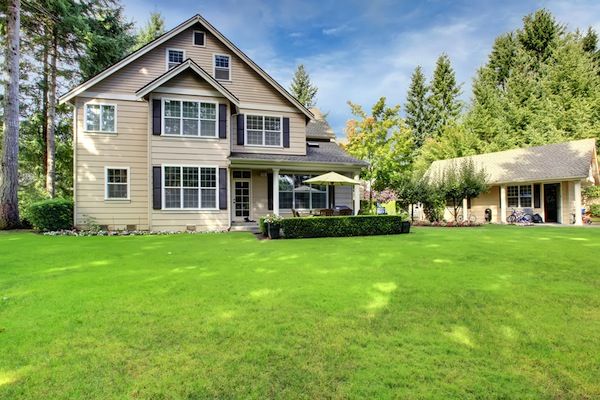
What Time of Day Should I Water My Lawn?
You may wonder when to water your lawn. Why does the time of day or night even matter with this task? If you water at night, the grass stays wet longer, which sets up a moist environment for fungus and other issues to thrive and this will harm the overall health of your lawn. However, when you water in the heat of the afternoon, you lose moisture to evaporation, and this diminishes the effects of watering.
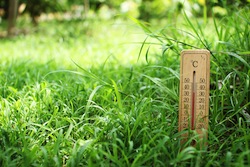
The ideal time to water, therefore, is early in the morning between 4 am and 8 am. Your lawn will have time to absorb the moisture deep down to promote root growth, but will not be too damp by dark that it encourages fungus and other problems.
The number of hours of continuous wetness should be kept to a minimum. It is assumed the lawn will be wet overnight from dew.
Therefore, the lawn should be allowed to dry out as quickly as possible after sunrise. Likewise, be sure the turf is completely dry before sunset. Do not water after 4:00 P. M. as this is the most dangerous time to water. Avoid watering on the hottest, most humid days when disease pressure is high.
A time schedule is easy to set with automatic sprinklers. In the event that you work, and need to water manually, stop 30 minutes before sunset to ensure the grass dries a bit before dark settles in on your lawn.
How Long Should I Water at a Time?
A watering session should be long enough to soak the area sufficiently so all the roots receive a beneficial drink. Sprinklers should be set to run for about 30 to 35 minutes at a time twice a week. Your goal is at least 1″ of water a week for your lawn. When it’s hot and dry, double the water times while still trying to water just 2 or 3 days a week.
Place a container in range of your sprinkler during one of the regular watering sessions and measure the amount of water in the container at the end. If it is about 1/2″ inch of water, twice a week is adequate. Adjust the length of your sessions accordingly if the amount is more or less than 1/2″ per session.
Related Read: Tips for Mowing Your Grass Like a Pro
Is a Hose or Sprinkler Better for Watering?
You could opt for either choice, but it is difficult to stand and water for 30 to 35 minutes with a hose. A sprinkler is a more convenient and accurate way to deliver sufficient water to the targeted area.
If you’re lucky enough to have a built-in sprinkler system, that’s the best because you can water in cycles and in specific zones without having to stand with the hose or move a manual sprinkler. Really, it boils down to time and convenience. As long as the water gets to your lawn in the right amount and often enough, it’s all good.
Lawn Watering Instructions for Johnson County, KS
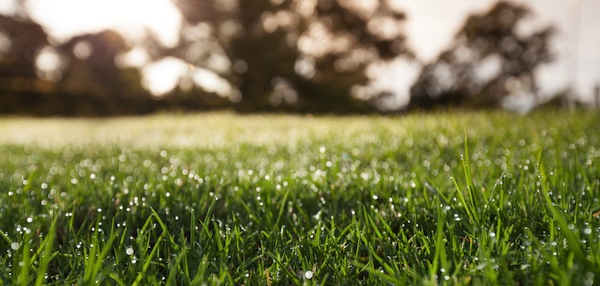
A healthy lawn is 75-85% water by weight. During hot weather your lawn may need 1 ½ to 2 inches of water per week to stay green. As drought progresses, the loss of green color may be accompanied by a loss of vigor, turf density, and root death from high soil temperatures.
Turf diseases are of greatest concern during hot weather. To reduce disease problems it is best to water in early morning (2:00 – 6:00 A.M.). If you cannot water during this time please refer to the chart below.
Warm Weather Watering Chart
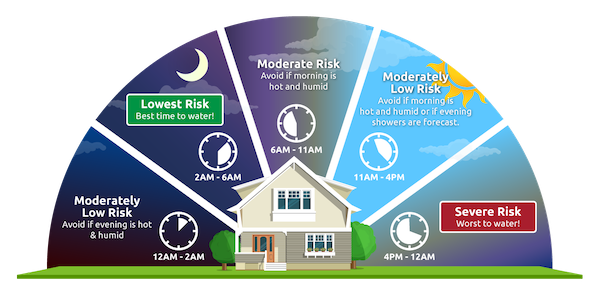
Drought damage is usually less acute than disease damage. If you cannot coordinate watering to minimize disease problems, it is better to delay watering until you can water at the right time or until the weather cools down.
Which Type of Sprinkler Is Best?
Except for a well-designed underground system, oscillating sprinklers are best. This type of sprinkler distributes the water evenly in a rectangular pattern. Overlap each area (including the edges of the lawn) by at least 10%.
Sprinklers that use a circular pattern leave gaps in the irrigation pattern. With circular patterns you should overlap each area by 50% to get even coverage.
The worst heat and drought stress is found on hillsides, along the edges of sidewalks, streets and driveways. Yet these areas are most commonly under-watered to avoid “wasting” water on the pavement. Take extra care and use extra water in these areas if you can.
What Should I Do About Dormant Lawns?
Do not try to bring a severely drought stricken lawn back during hot weather. An attempt to force a dormant lawn out of dormancy may result in severe disease damage. Deep water a dormant lawn once per week during the appropriate hours. Water so that the water penetrates six inches or more (check with a screwdriver).
This may require watering each spot four hours or more at a time. This kind of watering will keep the lawn alive until cooler weather allows recovery. Water dormant lawns heavily, but infrequently for best results.
Sprinkler Checklist for a Greener Lawn
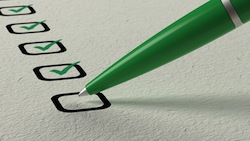
Kansas City’s spring showers bring summer flowers, and a green lawn, too. But before long those spring showers will fade away, and your irrigation or sprinkler system will have to take over the job of watering your yard.
Observe Water Pressure in Your Irrigation System
When you turn on the main water valve for the first time this season, make sure you check out the water pressure. If your sprinkler system is spewing out water with too much pressure you could end up with cracked pipes or worse, resulting in inefficient watering of your lawn.
A water pressure gauge is a good investment, and can give you more concrete numbers to work with. The device, which usually connects to a hose faucet, should give you a reading within the suggested operating range of 40-65 PSI. If it is outside of that range, you’ll want to make some adjustments, or call in the experts at Custom Lawn for lawn service in Lenexa, Olathe, Leawood, Overland Park, KS and the Kansas City metro to provide our lawn sprinkler services.
Check Sprinkler Settings
Speaking of adjustments, this is also a great time to check on the settings for your sprinkler system. Make sure the date and time is correct, and that the settings are suitable for your lawn’s specific needs. And remember to replace the batteries in the timer or controller every six months.
Check for Unusually Wet Areas on Your Lawn
Walk around your lawn and look and feel for overly wet areas that result in muddy or barren patches in your yard. This could be a sign of a leaky valve. Valves regulate the distribution of water throughout your entire system. If they are leaky they will not only waste water, but also make your water bill spike.
Check Sprinkler Heads
As we mentioned before, regularly inspect all of your sprinkler heads. Check for dirt, sand, rocks, or any other type of debris that could block the water flow from your system. Blockages could cause too much or too little water in parts of your lawn resulting in an unhealthy landscape.
Make sure to also replace any broken or worn components, like sprinkler nozzles, heads, valves or pipes.
Sprinkler Tips to Stop Wasting Water and Money

If you have a sprinkler system, like many of our customers in Olathe, Overland Park, and surrounding areas, you save a lot time and your lawn and landscaping look great. But how much water are you wasting?
You’d be surprised at how many customers we find during our inspections who have leaks or malfunctioning heads or other problems that waste a lot of precious water. Their water bills were going higher, but they were paying for water that was going down the drain.
So what can you do to conserve water and money this season? There are three main areas to look at – proper schedules, fine tuning, and annual maintenance.
Set Your Sprinkler System to Proper Schedules
If you set your automatic controller one time and let it run all season without adjusting it, you’re wasting a lot of water.
Watering schedules should be based on the Evapotranspiration (ET) rate for your area. We can calculate how much water your landscape needs and change your watering schedule throughout the season with ET information.
Water early in the morning – set your controller to water before 10:00 AM to reduce evaporation.
Fine Tune Your Sprinkler System
Checking sprinkler heads, pressure rates, runoff and drainage will help you pinpoint problem areas that waste water.
- Regulate your pressure – if you notice misting or overspray, your water pressure is too high. Turn down the flow control at the valve or use pressure-regulating heads. If pressure seems high everywhere, you can install a pressure-regulating valve at the point of connection
- Match sprinkler heads – Make sure your heads in each zone are the same so it all gets equal amounts of water. Spray heads and rotors apply different amounts of water. If your heads are unmatched some areas get more water than others
- Watch for runoff – If runoff occurs soon after watering begins, use the “Cycle & Soak” feature on your controller or set multiple start times for each zone to allow the water to soak in after each “cycle.” Look for wet spots – Look for suspicious spots in your landscape that are much greener or consistently wet and muddy. Underground leaks can be difficult to identify and may need to be located by a specialist
- Use check valves – If your sprinkler heads leak after the zone has completed its cycle, the system is wasting water. Heads with built-in check valves keep the water from draining from the pipe
- Reduce watering of established shrubs – Most trees, once established, do not need supplemental water
- Use rain sensors – Rain sensors automatically turn off the sprinkler system when it is raining outside.
- Cap sprinkler heads – Sprinkler heads that are no longer needed can be capped to adjust watering schedules during the season.
Perform Annual Sprinkler System Maintenance
Let one of our experts come take care of your sprinkler system repairs and maintenance in Overland Park or Olathe. Our Nationally Certified Irrigation Technician will provide repairs, one-time adjustments, or season-long care. No matter what level of service you need, Custom Lawn can help.
Spring startup – have one of Custom Lawn’s professional irrigation technicians start your system in the spring. We will catch any problems early on before too much water is wasted.
Regular maintenance checks – during our regular maintenance checks (about every four weeks) we will troubleshoot any problems we find to keep your system running smoothly and efficiently.
Winterization – blowing out all of the moisture will prevent any freezing problems with water in the lines. We make sure your system is water and danger free.
By using the latest in advanced irrigation control technology, adjusting your schedule regularly, and properly maintaining your sprinkler system, you will help ensure the health of your landscape while conserving water and saving money.


